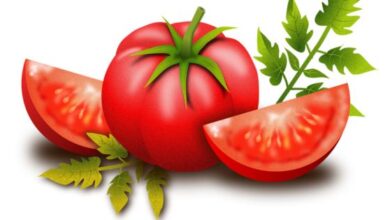Cows’ Milk Allergy

Cows Milk Allergy (CMA): A Comprehensive Guide for Parents
Imagine your little one enjoying a warm bottle of milk, a seemingly ordinary moment filled with love and nourishment. But for some parents, this picture can turn into a scene of distress and discomfort. Cows milk allergy (CMA), also known as cows’ milk protein allergy (CMPA), can be a confusing and worrying experience for parents of young children. This article dives deep into the world of CMA, equipping you with the knowledge and resources to navigate this challenge with confidence.
Unveiling the Culprit: What is Cows Milk Allergy?
CMA is an immune system reaction triggered by proteins found in cow’s milk. When a baby with CMA consumes cow’s milk or formula made with cow’s milk protein, their immune system mistakenly identifies these proteins as harmful invaders. This triggers the release of chemicals like histamine, causing a variety of allergic symptoms.
Think of your baby’s immune system as a high-security alarm system. In CMA, cow’s milk protein triggers a false alarm, leading to the release of inflammatory chemicals that cause the allergic reaction.
Unmasking the Enemy: Recognizing CMA Symptoms
CMA symptoms can vary depending on the severity of the allergy and the age of your child. The warning signs to be on the lookout for:
-
Skin Reactions: Eczema (red, itchy, and scaly patches of skin) is a frequent culprit. Hives (raised, itchy red welts) may also appear. Imagine your baby’s soft skin becoming irritated and itchy, like a delicate flower exposed to harsh chemicals.
-
Digestive Issues: Vomiting, diarrhea, fussiness during feeding, and blood in the stool are some signs of digestive distress caused by the allergic reaction. Picture a fussy baby struggling to keep food down, their tiny tummy upset by the milk they just consumed.
-
Respiratory Symptoms: Wheezing, coughing, and a runny nose can occur in some cases, mimicking a cold. Imagine the peaceful gurgles of a feeding session turning into labored breaths and a runny nose, causing concern.
-
Anaphylaxis (Rare): This is a severe and potentially life-threatening allergic reaction requiring immediate medical attention. Symptoms include difficulty breathing, swelling of the face and throat, and a rapid heartbeat. Thankfully, this is rare, but it’s crucial to be aware of the signs.
Remember: This list is not exhaustive. If you suspect your child has CMA, consult your pediatrician immediately. They can diagnose the allergy and recommend the best course of action.
Cracking the Code: Diagnosing CMA
Diagnosing CMA can involve a combination of approaches:
-
Detailed Medical History: Your pediatrician will discuss your child’s symptoms, feeding habits, and family history of allergies.
-
Physical Examination: A thorough examination by the pediatrician can reveal signs of allergic reactions.
-
Elimination Diet: This involves temporarily removing cow’s milk from your child’s diet and monitoring for improvement in symptoms. Imagine a detective process, eliminating cow’s milk as a suspect to see if the symptoms disappear.
-
Blood or Stool Tests: In some cases, blood tests or stool tests might be recommended to confirm the allergy.
Early diagnosis is key to managing CMA effectively and ensuring your child receives the proper nutrition they need to thrive.
Taming the Beast: Managing CMA
Living with CMA requires adapting your child’s diet. Here are some key strategies:
-
Breastfeeding: If possible, continued breastfeeding is highly recommended for babies with CMA. Breast milk provides essential nutrients and protects your child from infections. Imagine breast milk as a natural defense shield and source of complete nutrition for your baby.
-
Hypoallergenic Formula: For babies who cannot breastfeed, a pediatrician-recommended hypoallergenic formula specially designed for CMA will be necessary. Think of these formulas as specially crafted alternatives that won’t trigger the allergic reaction.
-
Dietary Changes: Once your child starts transitioning to solid foods, carefully read food labels and avoid any products containing cow’s milk or milk products. Imagine becoming a food detective, scrutinizing labels to ensure your child doesn’t consume hidden cow’s milk protein.
-
Support Groups: Parents navigating CMA can benefit from the emotional support and practical advice they receive from other parents. Imagine a community of understanding parents who can share experiences and offer encouragement.
Living with CMA can be challenging, but with proper management and support, your child can lead a healthy and fulfilling life.
A Brighter Future: Living Well with CMA
The good news is that most children with CMA outgrow the allergy by the age of 3-4. In the meantime, here are some tips for navigating life with CMA:
-
Communicate with Caregivers: Inform daycare providers, schools, and family members about your child’s CMA. Ensure they understand the allergy and have an emergency plan in place. Imagine creating a safety net of awareness around your child’s allergy.
-
Be Prepared: Carry an allergy alert card or wear a medical bracelet for your child, outlining the allergy and emergency procedures. Think of it as a portable shield, informing others about your child’s needs.
-
Pack Safe Snacks: When venturing out, pack safe snacks that are free of cow’s milk protein. This ensures your child has access to healthy options wherever you go. Imagine having a backpack filled with safe and delicious alternatives to keep your child’s hunger at bay.
-
Embrace Advocacy: Educate yourself further about CMA and become an advocate for your child. Raise awareness and dispel myths about allergies. Imagine becoming a voice for your child and a champion for allergy understanding.
-
Celebrate Milestones: Living with CMA requires constant vigilance, but remember to celebrate milestones along the way. Every step forward, from introducing new safe foods to managing the allergy confidently, deserves recognition.
By adopting these strategies and maintaining a positive attitude, you can empower your child to thrive despite CMA.
Conclusion: A Journey of Love and Care
Cows’ milk allergy can be a disruptive experience for both parents and children. However, with the right knowledge, support system, and proactive management strategies, you can navigate this journey with confidence. Remember, you are not alone. By prioritizing your child’s health and well-being, fostering open communication, and embracing a positive outlook, you can ensure your little one flourishes despite the challenges of CMA.
Frequently Asked Questions (FAQs) about Cows Milk Allergy (CMA)
Can I continue breastfeeding if my baby has CMA?
Absolutely! Breastfeeding is highly recommended for babies with CMA. Breast milk is not only a natural source of essential nutrients but also provides valuable antibodies that can help protect your baby from infections.
What if I can’t breastfeed?
If breastfeeding is not possible, your pediatrician will recommend a hypoallergenic formula specifically designed for babies with CMA. These formulas are broken down extensively, making the cow’s milk protein easier to digest and reducing the allergic reaction.
What are some signs of a severe allergic reaction (anaphylaxis)?
While rare in CMA cases, anaphylaxis is a life-threatening emergency. Be aware of these signs:
- Difficulty breathing or wheezing
- Swelling of the face, lips, tongue, or throat
- Rapid heartbeat
- Dizziness or weakness
- Severe nausea or vomiting
- Loss of consciousness
How long will my child have CMA?
Most children outgrow CMA by the age of 3-4. However, consult your pediatrician for regular monitoring and to track your child’s progress.
What foods should I avoid if my child has CMA?
Once your child starts transitioning to solid foods, carefully read food labels and avoid any products containing cow’s milk or milk products. This includes ingredients like whey, casein, lactose, and milk derivatives.
What are some safe alternatives to cow’s milk?
There are a variety of safe and delicious alternatives for children with CMA, including:
- Soy milk (consult your pediatrician before introducing soy due to potential allergies)
- Almond milk
- Rice milk
- Coconut milk (limited quantities due to saturated fat content)
- Oat milk
These alternatives can be used in cooking and baking to ensure your child enjoys a balanced and nutritious diet.
Where can I find support groups for parents of children with CMA?
Several online and local support groups connect parents navigating CMA. These groups offer a platform to share experiences, ask questions, and gain valuable insights from others facing similar challenges. Ask your pediatrician for recommendations or search online for reputable support groups focused on CMA.
How can I manage CMA at daycare or school?
Communicate openly with your child’s daycare provider or school about the CMA diagnosis. Provide them with a doctor’s note outlining the allergy and emergency procedures. Ensure they have an allergy action plan in place and understand how to handle potential reactions.
What if someone accidentally gives my child cow’s milk?
If your child accidentally consumes cow’s milk, the severity of the reaction will depend on the allergy level. Monitor your child for any symptoms and contact your pediatrician immediately if you have any concerns.
Remember, early intervention is crucial for managing allergic reactions. Keep an emergency allergy medication (like an EpiPen) on hand if prescribed by your doctor, and always follow your pediatrician.











